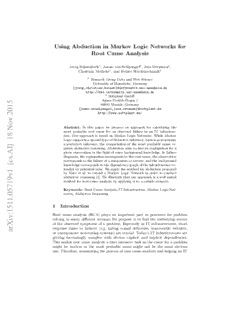
Using Abduction in Markov Logic Networks for Root Cause Analysis PDF
Preview Using Abduction in Markov Logic Networks for Root Cause Analysis
Using Abduction in Markov Logic Networks for Root Cause Analysis Joerg Schoenfisch1, Janno von Stu¨lpnagel2, Jens Ortmann2, Christian Meilicke1, and Heiner Stuckenschmidt1 1 Research Group Data and Web Science University of Mannheim, Germany {joerg,christian,heiner}@informatik.uni-mannheim.de http://dws.informatik.uni-mannheim.de 2 Softplant GmbH Agnes-Pockels-Bogen 1 5 1 80992 Munich, Germany 0 {janno.stuelpnagel,jens.ortmann}@softplant.de 2 http://www.softplant.de/ v o N Abstract. In this paper we propose an approach for calculating the most probable root cause for an observed failure in an IT infrastruc- 8 ture. Our approach is based on Markov Logic Networks. While Markov 1 Logicsupportsaspecialtypeofdeductiveinference,knownasmaximum a posteriori inference, the computation of the most probable cause re- ] I quiresabductivereasoning.Abductionaimstofindanexplanationfora A given observation in the light of some background knowledge. In failure . diagnosis,theexplanationcorrespondstotherootcause,theobservation s c correspondstothefailureofacomponentorservice,andthebackground [ knowledgecorrespondstothedependencygraphoftheinfrastructureex- tendedbypotentialrisks.Weapplythemethodforabductionproposed 1 v by Kate et al. to extend a Markov Logic Network in order to conduct 9 abductive reasoning [1]. We illustrate that our approach is a well suited 1 method for root cause analysis by applying it to a sample scenario. 7 5 Keywords: RootCauseAnalysis,ITInfrastructure,MarkovLogicNet- 0 works, Abductive Reasoning . 1 1 1 Introduction 5 1 : Root cause analysis (RCA) plays an important part in processes for problem v i solving in many different settings. Its purpose is to find the underlying source X of the observed symptoms of a problem. Especially in IT infrastructures, short r response times to failures (e.g. failing e-mail deliveries, inaccessible websites, a or unresponsive accounting systems) are crucial. Today’s IT infrastructures are getting increasingly complex with diverse explicit and implicit dependencies. This makes root cause analysis a time intensive task as the cause for a problem might be unclear or the most probable cause might not be the most obvious one.Therefore, automatingthe processof root causeanalysis andhelping anIT 2 Schoenfisch, von Stu¨lpnagel, Ortmann, Meilicke, Stuckenschmidt administrative to identify the source of a failure or outage as fast as possible is important to achieve a high service level. InthispaperwepresentourapproachtorootcauseanalysisthatusesMarkov Logic Networks (MLN) and abductive reasoning to enable an engineer to drill downfaston thesourceofaproblem.MarkovLogicNetworksprovideaformal- ism that combines logical formulas (to describe dependencies) and probabilities (toexpressvariouspossiblerisks)inasinglerepresentation.Wefocusonabduc- tivereasoninginMLNsandshowhowitcanbeusedforthepurposeofrootcause analysis. To our knowledge, the proposed approach is a novel method to root cause analysis that combines probabilistic and logical aspects in a well-founded framework. Withinourframework,theITinfrastructureisrepresentedasalogicaldepen- dencynetworkthatincludesvariousthreatstoitscomponents.Whenaproblem occurs, available observations are fed into the system which then generates the Markov Logic Network from the available observations, the given dependency network, and the general background knowledge related to the components of theinfrastructure.Someoftheseobservationsmightbespecifiedmanually,while other observations can be fed into the system automatically via constantly run- ning monitoring software. These observations are typically incomplete in the sense that not all relevant components are monitored. Thus, taking the given observationsintoaccount,theremightstillbeseveralexplanationsfortheprob- lem that occurred. Wecalculate,viaabduction,themostprobablecauseforthecurrentproblem, which is then presented to the user, e.g. the administrator of the IT infrastruc- ture.Theusercantheninvestigateifitisindeedthesourceoftheproblem.This mightrequiretomanuallychecktheavailabilityofsomecomponentortoanalyze a log file. If the proposed explanation is correct, counter-measures can be intro- duced immediately. If the additional observations revealed that the calculated explanationiswrong,thenewobservationsarefedintothesystemasadditional evidence and a better explanation is computed. This iterative, dialogue-based process is a practicable approach to quickly narrow down on a root cause. In our approach, we represent the given infrastructure and the possible risks in first-order logic. This allows us to automatically infer that certain threats are relevant for certain infrastructure components. Relevant background knowledge caneasilybemaintainedandusedtogeneratetheMarkovLogicNetwork.More- over,ourapproachcantakeintoaccountknownprobabilitiesofrisksandfailures. Theseprobabilitiesarederivedfromexpertjudgmentorstatisticaldata.Instead of computing multiple candidate explanations, which is possible in purely logic based approaches, we are able to generate the most probable explanation with our approach, while still leveraging the full power of an expressive declarative framework. This paper is structured as follows. First, we present the theoretical under- pinnings of our approach. In Section 2, we give a brief description to Markov Logic, introduce the general notion of abduction, and explain how abduction can be realized in the context of Markov Logic Networks. In Section 3, we first Using Abduction in Markov Logic Networks for Root Cause Analysis 3 present a typical scenario for root cause analysis. Then, we show how to model thisscenarioinourframeworkanddescribehowtoapplyabductivereasoningto findthemostprobablerootcause.Finally,wepresentaworkflowthatillustrates how our approach is used in the context of a dialogue-based process. We show how our approach is related to other works in Section 4. Finally, we discuss the drawbacksandbenefitsofourapproach,andpointoutsomedirectionsforfuture work in Section 5. 2 Preliminaries This section first describes Markov Logic Networks. Then we explain abduction and its concrete implementation in the context of Markov Logic Networks. 2.1 Markov Logic Networks Markov Logic Networks (MLN) generalize first-order logic and probabilistic graphical models by allowing hard and soft first-order formulas [2]. Hard for- mulas are regular first-order formulas, which have to be fulfilled by every inter- pretation.Aninterpretationisalsoreferredtoasapossibleworld.Softformulas have weights that support (in case of positive weights) or penalize (in case of negative weights) worlds in which they are satisfied. The probability of a possi- bleworld,onethatsatisfiesallhardformulas,isproportionaltotheexponential sum of the weights of the soft formulas that are satisfied in that world. This corresponds to the common understanding of Markov Networks as log-linear probabilistic model [2]. AnMLNisatemplateforconstructingaMarkovNetwork.Aformulaiscalled agroundedformulaifallvariableshavebeenreplacedbyconstants.Givenasetof constants, a Markov Network can be generated from the MLN by computing all possible groundings of the given formulas. Due to the closed world assumption, thedomainofinterestconsistsofonlythoseentitiesthataredefinedbyspecifying the set of constants. An atom is a formula that consists of a single predicate. A possible world corresponds to a set of ground atoms, which is usually a small subset of all possible groundings. Formally, an MLN L is a set of pairs (cid:104)F ,w (cid:105), where F is a first-order logic i i i formula and w is a real numbered weight [2]. The MLN L, combined with a i finite set of constants C = {c ,c ,...c }, defines a ground Markov Network 1 2 |C| M as follows: L,C 1. M has one binary node for each possible grounding of each pred- L,C icate in L. The value of the node is 1 if the grounded atom is true and 0 otherwise. 2. M contains one feature for each possible grounding of each for- L,C mula F in L. The value of this feature is 1 if the formula is true, i and 0 otherwise. The weight of the feature is the w associated with i F in L. i [2, p. 113] 4 Schoenfisch, von Stu¨lpnagel, Ortmann, Meilicke, Stuckenschmidt Generally, a feature can be any real-valued function of the variables of the network. In this paper we use binary features, essentially making the value of the function equal to the truth value of the grounded atom. Thedescriptionasalog-linearmodelleadstothefollowingdefinitionforthe probability distribution over possible worlds x for the Markov Network M : L,C (cid:18) (cid:19) 1 (cid:88) P(X =x)= exp w n (x) (1) Z i i i where Z is a normalization constant and n (x) is the number of true groundings i of F in x. i When describing the MLN we use the format (cid:104)first-order formula,weight(cid:105). Hardformulashaveinfiniteweights.Iftheweightis+∞theformulamustalways be true, if the weight is −∞ it must always be false. A soft formula with weight 0 has equal probabilities for being satisfied in a world or not. There are two types of inference with Markov Logic: maximum a posteriori (MAP)inferenceandmarginalinference.MAPinferencefindsthemostprobable world given some evidence. Marginal inference computes the posteriori proba- bility distribution over the values of all variables given some evidence. We are interested in MAP inference, as we want to determine the world with the most probable explanation for a failure. 2.2 Abduction in Markov Logic Networks Abductivereasoning–orsimplyabduction –isinferencetothebestexplanation. It is applicable to a wide array of fields in which explanations need to be found for given observations, for example plan or intent recognition, medical diagno- sis, criminology, or, as in our approach, root cause analysis. According to [1], abduction is usually defined as follows [3]: Given: Background knowledge B and a set of observations O, both formulated in first-order logic with O being restricted to ground formulae. Find: A hypothesis H, also a set of logical formulae, such that B∪H is con- sistent and B∪H (cid:96)O. In other words, find a set of assumptions (a hypothesis) that is consistent with thebackgroundknowledgeand,combinedwithit,explainstheobservation.Itis the opposite of deductive reasoning which infers effects from cause. The relation between root cause analysis and abductive reasoning is rather straightforward. In our approach, the background knowledge is the dependency network, respectively the Markov Logic Network to which we transform it. The dependency graph and Markov Logic Networks both are based on first-order logicasaformalismandthusconvenientlyarealreadyinthedesiredlogicalrep- resentation.Theobservations,i.e.informationaboutcomponentsbeingavailable orunavailable,arenotpartofthemodelbutratheraredirectlyprovidedasevi- dencetotheMLN.Wethentrytoprovethroughabductionthataspecificthreat – the most plausible cause – has occurred. Using Abduction in Markov Logic Networks for Root Cause Analysis 5 The inference mechanism in Markov Logic Networks is inherently deductive, notabductive.Deductivereasoningdrawsnew,logicallysoundconclusionsfrom givenstatements.Kateetal.andSinglaetal.[1,4]proposedmethods–Pairwise Constraint (PC) and Hidden Cause (HC) model – that adapt Markov Logic Networkstoautomaticallyperformprobabilisticabductivereasoningthroughits standard deductive reasoning mechanism. Their method augments the clauses of the MLN to support abductive reasoning as defined above. In general, the methodsfirstintroduceareverseimplicationforeverylogicalimplicationalready present in the network. For example, if there are formulas p → q, ..., p → q 1 n in the MLN, the formula q →p ∨...∨p is added to the MLN. 1 n In a second step the model is then extended with mutual exclusivity con- straints that bias the inference against choosing multiple explanations. The re- verse implications and the mutual exclusivity clauses are modeled as soft rules and may occasionally be violated, for example, if multiple explanations provide a better proof for the hypothetical root cause than a single explanation. We follow this basicidea, however, weargue thatthemutualexclusivityconstraints are not required in the application that we are interested in. 3 Root Cause Analysis with Markov Logic Networks Root cause analysis is the task of finding the underlying cause of an event. It is often applied to analyze system failures. System failures are commonly caused by a cascade of events. The goal of a root cause analysis is finding the original reason for the failure, so that a sustainable solution can be provided [5]. Root cause analysis typically comprises two phases: the detection of an event and the diagnosisoftheevent.Inourwork,weareconcernedwiththesecondphaseand assume that a failure has already been detected. In this section, we first illustrate the infrastructure of our case study. Af- terwards, we show how to model dependencies and risks as a set of first-order formulas.Then,weexplainhowweimplementedabductioninourMarkovLogic Network and show special properties of our settings which simplify the general approach of abductive reasoning. Finally, we explain how the method is inte- grated in an iterative process using the example presented at the beginning. 3.1 Scenario Setting In the subsequent sections we discuss our approach with the help of an infras- tructure shown partially in Figure 1. This small sample revolving around an office multifunction printer consists of the following components: – ThebasicdependencyforallcomponentsisthePower Supply.Theonlyrisk that can affect it is a general outage. – The Network Switch connects the other components. It onlydepends on the power supply; it has multiple risks, e.g. congestion, overheating, or denial- of-service attack, not explicitly depicted in the figure. 6 Schoenfisch, von Stu¨lpnagel, Ortmann, Meilicke, Stuckenschmidt – The two servers mail.uni-ma and cas.uni-am each offer one service, i.e. the Mail Service andanLDAP authentication service.TheMailServiceusesthe LDAP service to authenticate users. Both servers have various threats, e.g. malicious software, DOS attacks, overloading, or compromise of the system. – The Office Printer offers three services: Copying, Printing, and Scanning. It also has various problem sources, e.g. lack of resources or a technical malfunction. Scan Service Mail Service LDAP CopyingService RReLResaLeoLsacsoaukcocuk roukc rofe cro fces fe s s MsRoRaeLfelLstaiwsoaccoicukaouk rrou creofsce f es s trSyyRisRneLtegLseaso-acmoocukuuak ro tctro ifceoc fes fs passwords PrintingService Office Printer mail.uni-ma cas.uni-ma pDoiwsreurp tsiuopnp olyf Power Supply Network Switch spMaRnRieLsneLsauisoancsocukeguk r oto crorfcefe f es es Fig.1. Case Study: Office multifunction printer with risks attached The threats we are using in our example are defined in the IT-Grundschutz Catalogues [6, p. 417ff.]: – Disruption of power supply (T 4.1): Short disruption of the power supply, morethan10ms,orvoltagespikescandamageITdevicesorproducefailures in its operation. – Failure of Devices or Systems (T 0.25): No equipment runs infinitely and a hardware failure in an IT device will happen if it runs long enough. Beyond the damage of the device, the downtime has an effect on the processes that depend on the device or can even damage other devices, e.g. in the case of a cooling system. – Systematic trying-out of passwords (T 5.18): An attacker can gain access to a system by discovering the password of the system through systematic trial-and-error. – Lack of Resources (T 0.27): If the given resources (for example bandwidth, disk space or personnel) in an area of the operation are smaller than the Using Abduction in Markov Logic Networks for Root Cause Analysis 7 current demand a bottleneck occurs. This results in congestion and failure of operation. – Malicious software (T 5.23): Malicious software tries to execute a process that is unwanted or damaging for the owner of the device that runs the software. This includes viruses, worms and Trojan horses. – Misuseofspanningtree(T5.114):AnattackercanuseBridgeProtocolData Units (BPDUs) to initialize the recalculation of the switch topology. This can be used to disrupt the availability of the network. The IT-Grundschutz Catalogues are a comprehensive collection of threats and safeguardsforvariouspartsofanITinfrastructure3.Theyarecreatedandmain- tained by the German Federal Office for Information Security4, and compatible to the ISO 27001 certification5. 3.2 Modeling the Infrastructure Thefoundationofourrootcauseanalysisisthedependencymodel.Itusesfirst- order logic to describe various aspects of the IT infrastructure. Our basic model uses five predicates: specificallyDependsOn(x,y) specifiesthatcomponentxisspecificallydepen- dentoncomponenty,e.g.themailservicethatrunsonthemailserver.This predicate does not allow for any redundancy of y. genericallyDependsOn(x,y) specifiesthatcomponentxdependsony.ymay be replaced by some other redundant component. An example is a server running on the normal power supply or some uninterruptible power source. redundancy(x,y) states that x and y are redundant and x can replace y. hasRisk(x,y) assignstheriskytocomponentx,i.e.yisathreatthatendangers the functionality of a component and it can affect x. unavailable(x) designates a component x as unavailable, e.g. offline or not functioning properly. Formulae 2a to 2f depict the basic MLN program built from those predicates: (cid:104)∀x,y(specificallyDependsOn(x,y)∧unavailable(y)⇒unavailable(x)),∞(cid:105) (2a) (cid:104)∀x,y(genericallyDependsOn(x,y)∧unavailable(y) (2b) ∧¬∃z(redundancy(y,z)∧¬unavailable(z))⇒unavailable(x)),∞(cid:105) (cid:104)∀x,y(redundancy(x,y)⇒redundancy(x,y)),∞(cid:105) (2c) (cid:104)∀x,y(redundancy(x,y)∧redundancy(y,z)⇒redundancy(x,z)),∞(cid:105) (2d) (cid:104)∀x,y(affectedByRisk(x,y)⇒unavailable(x)),∞(cid:105) (2e) (cid:104)∀x,y¬(specificallyDependsOn(x,y)∧genericallyDependsOn(x,y)),∞(cid:105) (2f) 3 https://www.bsi.bund.de/EN/Topics/ITGrundschutz/itgrundschutz_node.html 4 Bundesamt fu¨r Sicherheit in der Informationstechnik (BSI) 5 http://www.iso.org/iso/home/standards/management-standards/iso27001.htm 8 Schoenfisch, von Stu¨lpnagel, Ortmann, Meilicke, Stuckenschmidt Formula 2a forbids any world where infrastructure component x is unavail- ableandinfrastructurecomponentyisavailable,ifthereisaspecificdependency from x to y. Formula 2b is similar to Formula 2a, but for generic dependencies with redundancies. Provided x is generically dependent on y, y is unavailable, and there exists no available component z that is redundant with y, then x is also unavailable. Thus, a component is only available if every specific depen- dency is available or if at least one redundant component is available for each generic dependency, respectively. The symmetry and transitivity of redundancy is modeled by Formulae 2c and 2d. By adding these two formulas, we ensure that it is not required to specify redundancy for all pairs in both directions. If we extend an infrastructure with an additional redundant component, we only needtoaddasinglestatementinsteadofspecifyingtheinformationforallpairs in the group of redundant components. Formula 2e enforces that a component x that is affected by the effects of a risk y becomes unavailable. The predi- cates specificallyDependsOn(x,y) and genericallyDependsOn(x,y) are mutually exclusive (Formula 2f). The known dependencies, risks, and unavailabilities are modeled as evidence asshownbelow.Notethattheseformulasareonlytwoexamplesforallformulas required to describe the infrastructure depicted in Figure 1. (cid:104)specificallyDependsOn(MailService,mail.uni-ma),∞(cid:105) (3a) (cid:104)affectedByRisk(mail.uni-ma,MaliciousSoftware),−1.2(cid:105) (3b) Formula 3a is a hard fact, which states that the MailService depends on the server mail.uni-ma. The soft Formula 3b encodes that mail.uni-ma can be af- fected by MaliciousSoftware. This formula has a negative weight, i.e. has a low probability. As described before, the dependency relation must hold in every possible world. The soft formula is not fulfilled in most of the worlds. In fact, if only this evidence is given, the most probable world does not include it, as it lowers the sum of the weights of all formulas. Determiningthecorrectweightfortheevidenceisnottrivial.However,there exist efficient learning algorithms for MLNs [2]. Our basic dependency model only contains relatively simple rules, and only soft formulas in the evidence. One way in which we extended the MLN program is by adding additional general knowledge about types of components. For example, we can add information about the failure rate (in the form of a weight) of a specific hard drive model to our MLN program. (cid:104)∀x(SCSIHardDrive(x)⇒affectedByRisk(x,HeadCrash)),−1.8(cid:105) (4a) (cid:104)SCSIHardDrive(DriveInstance1),∞(cid:105) (4b) (cid:104)SCSIHardDrive(DriveInstance2),∞(cid:105) (4c) The hard drive model SCSIHardDrive is described as hard drive that has a certain risk of a head crash (4a). The weight attached to this formula can be derived from available failure rates. If required we can also add further types Using Abduction in Markov Logic Networks for Root Cause Analysis 9 relatedto,e.g.themanufacturerofthedrive,sinceitmightbeknownthatdrives produced by a certain company have a lower failure rate. We then can model individual drives as instance of this type (Formulae 4b and 4c). Subsequently, they inherit all the properties, i.e. the weighted risk of a head crash. This way, we can build hierarchies of components or threats that facilitate populating the model with evidence later. Another possible usage is to define predicates based on location, e.g. that all components in the same building de- pendonthesamepowersupply.Thus,wedonothavetospecifyallinformation explicitly, but leverage the reasoning capabilities of our approach. 3.3 Computing Explanations We now detail our approach and describe how the Markov Logic Network is constructed and extended, and how we use abductive reasoning for root cause analysis.Theconstructionfrombackgroundknowledgeandextensionforabduc- tion of the Markov Logic Network is only done once and does not have to be changed during the root cause analysis. According to the method proposed in [1] we have to add one reverse implication for the Formulae 2a, 2b, and 2e: ∀x(unavailable(x)⇒(∃y(specificallyDependsOn(x,y)∧unavailable(y))) ∨ (∃y(genericallyDependsOn(x,y)∧unavailable(y) (5) ∧ ¬∃z(redundancy(y,z)∧¬unavailable(z)))) ∨ (∃y(affectedByRisk(x,y))) Additionally, Kate et al.s’ method requires clauses for mutual exclusivity to be added. The purpose of these clauses is to “explain away” multiple causes for an observation and prefer a single one [7]. The reverse implications as well as the mutualexclusivityclausesareusuallymodeledassoftclauses.Ingeneral,foreach set of reverse implications P with the same left-hand side, (|Pi|2+|Pi|) ∈ O(n2) i 2 mutual exclusivity clauses are added. However, different from networks in that general method, our approach ex- hibits a property that simplifies the additional rules needed for abduction: All the weights in the evidence are negative – based on the reasonable assumption thatthreatsandrisksonlyoccurrarely,i.e.componentsareavailablemorethan 50% of the time. This property allows us to reduce the size of the Markov Logic Network by leaving out the mutual exclusivity clauses completely: Due to the reverse implication, the MLN solver has to chose one cause to make the clause true. However, as all causes have negative weights and thus every cause set to true is lowering the sum of the weights of a possible world, the solver is already biasedagainstchoosingmultipleexplanations.Thissavesusfromgeneratingthe quadratic number of mutual exclusivity clauses. AfterconstructingandextendingtheMarkovLogicNetwork,wecanconduct the root cause analysis. The overall process flow of our approach is depicted in Figure 2. The analysis is a dialog-based and iterative process, with interaction betweenoursystemandanadministrativeuser.Afullyautomaticworkflowisde- sirable, however, not every information can be retrieved directly and sometimes manual investigation of log files or on the status of components is necessary. 10 Schoenfisch, von Stu¨lpnagel, Ortmann, Meilicke, Stuckenschmidt Fig.2. Process flow for our approach on root cause analysis. Rectangles denote auto- matic action. Trapezoids require manual interaction by an administrative user. Initsnormalstate,withoutanyhardevidenceaboutavailabilitiesorunavail- abilities,allcomponentsareassumedtobeavailable.Thus,whencalculatingthe MAP state, it contains all components as available. When a problem occurs the user is required to provide observations as evidence for the MLN (1). These observations include any certain information about available and unavailable components. For example, the user can enter that printing over the network is not possible, although the network is functional as browsing the internet still works. This results in hard evidence for the printing service being unavailable and network services and hardware required for internet access being available. Our approach extends the Markov Logic Network with the new evidence (2) and uses an MLN solver to run MAP inference on it (3). The calculated MAP state contains the evidence provided by the user (this must be always fulfilled), components being unavailable due to a direct or indirect dependency on components observed as not available, and (at least) one root cause that explains the unavailabilities. Components which are not affected by specified observations or the calculated root cause are listed as available. The root cause fulfills the following properties: – It explains all unavailabilities in the evidence. This is the case due to the additional reverse implications. – It is not affecting any component stated as available in the evidence. Other- wise a hard rule would be violated. – It is the most probable cause for all the observations given as evidence and the risk probabilities specified as weights. Wemaketheassumptionthatallcausesareunlikely(theyappearlessthan50% ofthetime).Thus,theirweightsarenegative.AstheobjectiveoftheMAPstate ismaximizingthesumofallweights,onlythemostlikelycausethatexplainsall observationsisincluded.Alesslikelycausehasahighernegativeweight,causing the sum of the weights to be lower than optimal, and thus getting rejected. Our approach only presents multiple possible root causes, if the sum of their weightsislessthantheweightofasinglepossiblecause.Iftherearetwopossible root causes with the same weight, only one is presented at random. The user then has to investigate the presented root cause (5). If it is the source of the observed problem, the analysis is finished and the cause can be
Description:The list of books you might like

Believe Me

The Sweetest Oblivion (Made Book 1)

Corrupt (Devil's Night #1)

The Strength In Our Scars

Bugles and a Tiger

Capitolul 4.1 Apa

Nazi Medicine and the Nuremberg Trials: From Medical War Crimes to Informed Consent

Econometría Aplicada II

DTIC ADA275521: CBSD: The Celestial Background Scene Descriptor
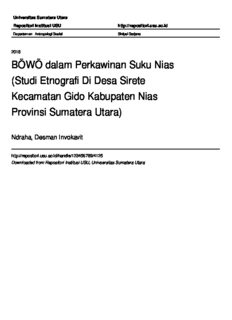
böwö dalam perkawinan suku nias departemen antropologi sosial

Daireen complete by Frank Frankfort Moore

Børn og angst

Pseudocercospora flavomarginata sp. nov. from Eucalyptus leaves in Thailand

PHILOSOPHY OF RELIGION
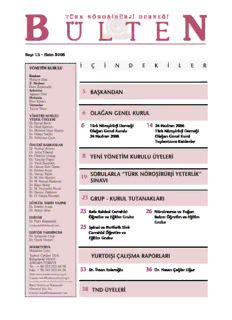
Bülten No 13 - Ekim 2006

Building to Impact: The 5D Implementation Playbook for Educators

C linguaxe admin Fut

Greek Government Gazette: Part 3, 2009 no. 407
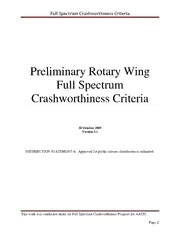
DTIC ADA515189: Preliminary Rotary Wing Full Spectrum Crashworthiness Criteria

CAFE BAR

O Evangelho segundo o Espiritismo
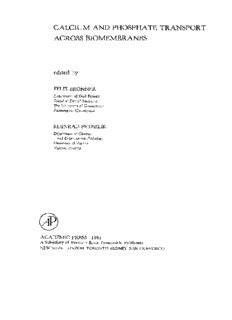
Calcium and Phosphate Transport Across Biomembranes


